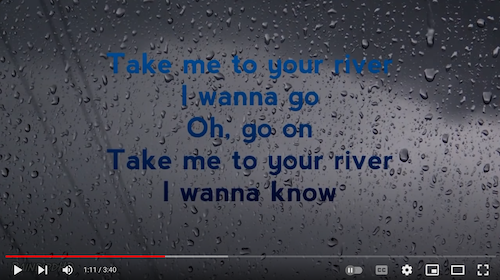Teach This Poem, though developed with a classroom in mind, can be easily adapted for remote learning, hybrid learning models, or in-person classes. Please see our suggestions for how to adapt this lesson for remote or blended learning. We have also noted suggestions when applicable and will continue to add to these suggestions online.
Listen to the song “River” by Leon Bridges.
The following activities and questions are designed to help your students use their noticing skills to move through the poem and develop their thinking skills so they understand its meaning with confidence, using what they’ve noticed as evidence for their interpretations. Read more about the framework upon which these activities are based.
-
Warm-up: Write out your full name. Count the syllables in your name. What do you notice? (Teachers, you may wish to model this for younger students.)
-
Before Reading the Poem: Listen to the song “River” by Leon Bridges. What words or phrases from the song stand out to you? Why?
-
Reading the Poem: Silently read the poem “Haiku [for you]” by Sonia Sanchez. What do you notice about the poem? Note any words or phrases that stand out to you, or any questions you might have.
-
Listening to the Poem: Enlist two volunteers and listen as the poem is read aloud twice, and write down any additional words and phrases that stand out to you. (Teachers, we suggest reading the poem a few times, alternating by reading first word by word, then line by line, and then the entire haiku. Each time, ask students to reflect on their reading.)
-
Small Group Discussion: Share what you noticed about the poem with a small group. How do the resources from the beginning of class help you to understand the poem? In what ways is the speaker in the poem similar to or different from the speaker in the song? What might it mean if loving the beloved in the poem is “a long river running?”
-
Whole Class Discussion: Read the definition of haiku. What do you think of the haiku form of this poem? Why? (Teachers, your students might enjoy watching this video about Sonia Sanchez and haiku.) In what ways is this poem a love poem? Why?
-
Extension for Grades 7-8: As a class, practice writing a few haikus together by first brainstorming words and then counting syllables. As a class, share how it felt to write these haikus.
-
Extension for Grades 9-12: Over the next week, write one haiku a day (or more) about anything from your daily life. This might be school, family, social media, or anything of your choice. At the end of the week, share your favorite poems. Discuss with your class what you learned about haikus over the course of the week. Extend your learning by reading more haikus, or learn about the poetic form, haibun.
“Syllabic verse is a poetic form with a fixed or constrained number of syllables per line, as well as per stanza. The meter of syllabic verse poetry is determined based on counting the number of syllables, rather than the number of stresses, which is a term describing when a greater amount of force is used to pronounce one syllable over an adjacent, unstressed syllable.” Read more about syllabic verse.

